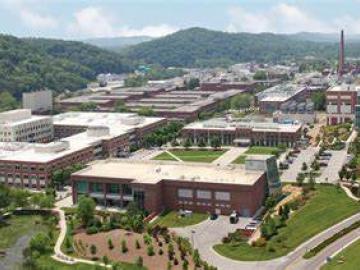Filter News
Area of Research
- Advanced Manufacturing (14)
- Biological Systems (2)
- Biology and Environment (97)
- Biology and Soft Matter (1)
- Building Technologies (1)
- Clean Energy (90)
- Climate and Environmental Systems (4)
- Computational Engineering (1)
- Computer Science (1)
- Fusion and Fission (5)
- Fusion Energy (1)
- Materials (22)
- Materials for Computing (3)
- Mathematics (1)
- National Security (7)
- Neutron Science (9)
- Nuclear Science and Technology (6)
- Quantum information Science (1)
- Supercomputing (20)
News Type
News Topics
- (-) 3-D Printing/Advanced Manufacturing (63)
- (-) Bioenergy (61)
- (-) Composites (14)
- (-) Environment (140)
- (-) Molten Salt (6)
- Advanced Reactors (19)
- Artificial Intelligence (51)
- Big Data (35)
- Biology (70)
- Biomedical (37)
- Biotechnology (12)
- Buildings (33)
- Chemical Sciences (26)
- Clean Water (26)
- Climate Change (63)
- Computer Science (115)
- Coronavirus (28)
- Critical Materials (12)
- Cybersecurity (17)
- Decarbonization (46)
- Emergency (1)
- Energy Storage (58)
- Exascale Computing (22)
- Fossil Energy (3)
- Frontier (20)
- Fusion (36)
- Grid (40)
- High-Performance Computing (49)
- Hydropower (11)
- Irradiation (2)
- Isotopes (28)
- ITER (5)
- Machine Learning (28)
- Materials (71)
- Materials Science (67)
- Mathematics (6)
- Mercury (10)
- Microelectronics (2)
- Microscopy (30)
- Nanotechnology (28)
- National Security (33)
- Net Zero (7)
- Neutron Science (70)
- Nuclear Energy (67)
- Partnerships (12)
- Physics (29)
- Polymers (15)
- Quantum Computing (18)
- Quantum Science (33)
- Renewable Energy (1)
- Security (11)
- Simulation (28)
- Software (1)
- Space Exploration (21)
- Statistics (1)
- Summit (35)
- Sustainable Energy (78)
- Transformational Challenge Reactor (3)
- Transportation (60)
Media Contacts

Rishi Pillai and his research team from ORNL will receive a Best Paper award from the American Society of Mechanical Engineers International Gas Turbine Institute in June at the Turbo Expo 2024 in London.

ORNL’s Erin Webb is co-leading a new Circular Bioeconomy Systems Convergent Research Initiative focused on advancing production and use of renewable carbon from Tennessee to meet societal needs.

Scientists at ORNL have developed 3D-printed collimator techniques that can be used to custom design collimators that better filter out noise during different types of neutron scattering experiments
ORNL scientists have determined how to avoid costly and potentially irreparable damage to large metallic parts fabricated through additive manufacturing, also known as 3D printing, that is caused by residual stress in the material.

SkyNano, an Innovation Crossroads alumnus, held a ribbon-cutting for their new facility. SkyNano exemplifies using DOE resources to build a successful clean energy company, making valuable carbon nanotubes from waste CO2.

ORNL scientists and researchers attended the annual American Geophysical Union meeting and came away inspired for the year ahead in geospatial, earth and climate science.

ORNL climate modeling expertise contributed to a project that assessed global emissions of ammonia from croplands now and in a warmer future, while also identifying solutions tuned to local growing conditions.

Scientists at the Department of Energy’s Oak Ridge National Laboratory are using a new modeling framework in conjunction with data collected from marshes in the Mississippi Delta to improve predictions of climate-warming methane and nitrous oxide

New computational framework speeds discovery of fungal metabolites, key to plant health and used in drug therapies and for other uses.

Electric vehicles can drive longer distances if their lithium-ion batteries deliver more energy in a lighter package. A prime weight-loss candidate is the current collector, a component that often adds 10% to the weight of a battery cell without contributing energy.




